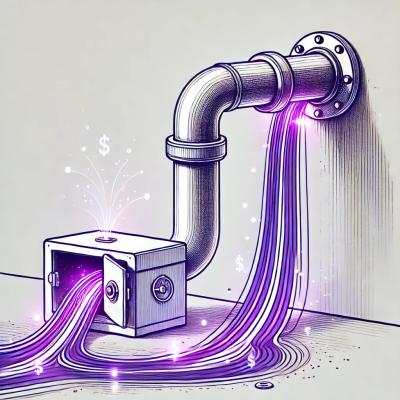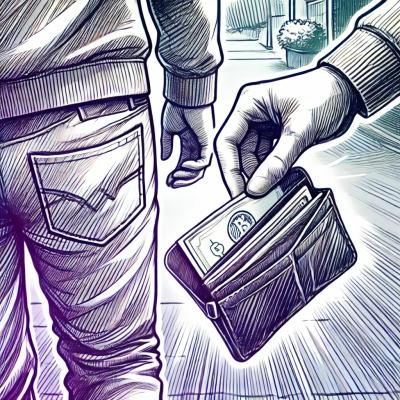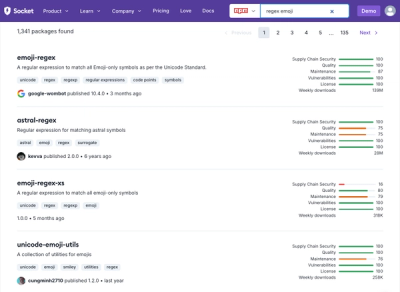
Research
Security News
Malicious npm Package Targets Solana Developers and Hijacks Funds
A malicious npm package targets Solana developers, rerouting funds in 2% of transactions to a hardcoded address.
An image processing library written entirely in JavaScript (i.e. zero external or native dependencies).
The "JavaScript Image Manipulation Program" :-)
An image processing library for Node written entirely in JavaScript, with zero external or native dependencies.
Example usage:
var Jimp = require("jimp");
// open a file called "lenna.png"
Jimp.read("lenna.png", function (err, lenna) {
if (err) throw err;
lenna.resize(256, 256) // resize
.quality(60) // set JPEG quality
.greyscale() // set greyscale
.write("lena-small-bw.jpg"); // save
});
Using promises:
Jimp.read("lenna.png").then(function (lenna) {
lenna.resize(256, 256) // resize
.quality(60) // set JPEG quality
.greyscale() // set greyscale
.write("lena-small-bw.jpg") // save
}).catch(function (err) {
console.error(err);
});
The static Jimp.read method takes the path to a PNG, JPEG or BMP file and (optionally) a Node-style callback and returns a Promise:
Jimp.read("./path/to/image.jpg", function (err, image) {
// do stuff with the image (if no exception)
});
Jimp.read("./path/to/image.jpg").then(function (image) {
// do stuff with the image
}).catch(function (err) {
// handle an exception
});
The method can also read a PNG, JPEG or BMP buffer or from a URL:
Jimp.read(lenna.buffer, function (err, image) {
// do stuff with the image (if no exception)
});
Jimp.read("http://www.example.com/path/to/lenna.jpg", function (err, image) {
// do stuff with the image (if no exception)
});
JPEG images with EXIF orientation data will be automatically re-orientated as appropriate.
Once the callback is filed or the promise fulfilled, the following methods can be called on the image:
image.crop( x, y, w, h ); // crop to the given region
image.invert(); // invert the image colours
image.flip( horz, vert ); // flip the image horizontally or vertically
image.gaussian( r ); // Gaussian blur the image by r pixels (VERY slow)
image.blur( r ); // fast blur the image by r pixels
image.greyscale(); // remove colour from the image
image.sepia(); // apply a sepia wash to the image
image.opacity( f ); // multiply the alpha channel by each pixel by the factor f, 0 - 1
image.resize( w, h ); // resize the image. Jimp.AUTO can be passed as one of the values.
image.scale( f ); // scale the image by the factor f
image.rotate( deg[, resize] ); // rotate the image clockwise by a number of degrees. Unless `false` is passed as the second parameter, the image width and height will be resized appropriately.
image.blit( src, x, y ); // blit the image with another Jimp image at x, y
image.composite( src, x, y ); // composites another Jimp image over this iamge at x, y
image.brightness( val ); // adjust the brighness by a value -1 to +1
image.contrast( val ); // adjust the contrast by a value -1 to +1
image.posterize( n ); // apply a posterization effect with n level
image.mask( src, x, y ); // masks the image with another Jimp image at x, y using average pixel value
image.dither565(); // ordered dithering of the image and reduce color space to 16-bits (RGB565)
image.cover( w, h ); // scale the image so that it fills the given width and height
image.contain( w, h ); // scale the image to the largest size so that fits inside the given width and height
image.background( hex ); // set the default new pixel colour (e.g. 0xFFFFFFFF or 0x00000000) for by some operations (e.g. image.contain and image.rotate) and when writing formats that don't support alpha channels
image.mirror( horz, vert ); // an alias for flip
image.fade( f ); // an alternative to opacity, fades the image by a factor 0 - 1. 0 will haven no effect. 1 will turn the image
image.opaque(); // set the alpha channel on every pixel to fully opaque
image.clone(); // returns a clone of the image
(Contributions of more methods are welcome!)
The image can be written to disk in PNG, JPEG or BMP format (determined by the file extension) using:
image.write( path, cb ); // Node-style callback will be fired when write is successful
A PNG, JPEG or BMP binary Buffer of an image (e.g. for storage in a database) can to got using:
image.getBuffer( mime, cb ); // Node-style callback wil be fired with result
For convenience, supported MIME types are available as static properties:
Jimp.MIME_PNG; // "image/png"
Jimp.MIME_JPEG; // "image/jpeg"
Jimp.BMP; // "image/bmp"
The quality of JPEGs can be set with:
image.quality( n ); // set the quality of saved JPEG, 0 - 100
The format of PNGs can be set with:
image.rgba( bool ); // set whether PNGs are saved as RGBA (true, default) or RGB (false)
image.filterType( number ); // set the filter type for the saved PNG
image.deflateLevel( number ); // set the deflate level for the saved PNG
For convenience, supported filter types are available as static properties:
Jimp.PNG_FILTER_AUTO; // -1
Jimp.PNG_FILTER_NONE; // 0
Jimp.PNG_FILTER_SUB; // 1
Jimp.PNG_FILTER_UP; // 2
Jimp.PNG_FILTER_AVERAGE; // 3
Jimp.PNG_FILTER_PAETH; // 4
Jimp supports advanced colour manipulation using a single method as follows:
image.color([
{ apply: 'hue', params: [ -90 ] },
{ apply: 'lighten', params: [ 50 ] },
{ apply: 'xor', params: [ '#06D' ] }
]);
The method supports the following modifiers:
| Modifier | Description |
|---|---|
| lighten {amount} | Lighten the color a given amount, from 0 to 100. Providing 100 will always return white (works through TinyColor) |
| brighten {amount} | Brighten the color a given amount, from 0 to 100 (works through TinyColor) |
| darken {amount} | Darken the color a given amount, from 0 to 100. Providing 100 will always return black (works through TinyColor) |
| desaturate {amount} | Desaturate the color a given amount, from 0 to 100. Providing 100 will is the same as calling greyscale (works through TinyColor) |
| saturate {amount} | Saturate the color a given amount, from 0 to 100 (works through TinyColor) |
| greyscale {amount} | Completely desaturates a color into greyscale (works through TinyColor) |
| spin {degree} | Spin the hue a given amount, from -360 to 360. Calling with 0, 360, or -360 will do nothing - since it sets the hue back to what it was before. (works through TinyColor) |
| hue {degree} | Alias for spin |
| mix {color, amount} | Mixes colors by their RGB component values. Amount is opacity of overlaying color |
| tint {amount} | Same as applying mix with white color |
| shade {amount} | Same as applying mix with black color |
| xor {color} | Treats the two colors as bitfields and applies an XOR operation to the red, green, and blue components |
| red {amount} | Modify Red component by a given amount |
| green {amount} | Modify Green component by a given amount |
| blue {amount} | Modify Blue component by a given amount |
Jimp enables low-level manipulation of images in memory through the bitmap property of each Jimp object:
image.bitmap.data; // a Buffer of the raw bitmap data
image.bitmap.width; // the width of the image
image.bitmap.height // the height of the image
This data can be manipulated directly but remember: garbage in, garbage out.
A helper method is available to scan a region of the bitmap:
image.scan(x, y, w, h, cb); // scan a given region of the bitmap and call cb on every pixel
Example usage:
image.scan(0, 0, image.bitmap.width, image.bitmap.height, function (x, y, idx) {
// x, y is the position of this pixel on the image
// idx is the position start position of this rgba tuple in the bitmap Buffer
// this is the image
var red = this.bitmap.data[idx];
var green = this.bitmap.data[idx+1];
var blue = this.bitmap.data[idx+2];
var alpha = this.bitmap.data[idx+3];
// rgba values run from 0 - 255
// e.g. this.bitmap.data[idx] = 0; // removes red from this pixel
});
Alternatively, you can manipulate individual pixels using the following these functions:
image.getPixelColor(x, y); // returns the colour of that pixel e.g. 0xFFFFFFFF
image.setPixelColor(hex, x, y); // sets the colour of that pixel
Two static helper functions exist to convert RGBA values into single integer (hex) values:
Jimp.rgbaToInt(r, g, b, a); // e.g. converts 255, 255, 255, 255 to 0xFFFFFFFF
Jimp.intToRGBA(hex); // e.g. converts 0xFFFFFFFF to {r: 255, g: 255, b: 255, a:255}
If you want to begin with an empty Jimp image, you can call the Jimp constructor passing the width and height of the image to create and (optionally) a Node-style callback:
var image = new Jimp(256, 256, function (err, image) {
// this image is 256 x 256, every pixel is set to 0x00000000
});
You can optionally set the pixel colour as follows:
var image = new Jimp(256, 256, 0xFF0000FF, function (err, image) {
// this image is 256 x 256, every pixel is set to 0xFF0000FF
});
To generate a perceptual hash of a Jimp image, based on the pHash algorithm, use:
image.hash(); // aHgG4GgoFjA
By default the hash is returned as base 64. The hash can be returned at another base by passing a number from 2 to 64 to the method:
image.hash(2); // 1010101011010000101010000100101010010000011001001001010011100100
There are 18,446,744,073,709,551,615 unique hashes. The hammering distance between the binary representation of these hashes can be used to find similar-looking images.
To calculate the hammering distance between two Jimp images based on their perceptual hash use:
Jimp.distance(image1, image2); // returns a number 0-1, where 0 means the two images are percieved to be identical
Jimp also allows the diffing of two Jimp images using PixelMatch as follows:
var diff = Jimp.diff(image1, image2, threshold); // threshold ranges 0-1 (default: 0.1)
diff.image; // a Jimp image showing differences
diff.percent; // the proportion of different pixels (0-1), where 0 means the images are pixel identical
Using a mix of hammering distance and pixel diffing to comare images, the following code has a 99% success rate of detecting the same image from a random sample (with 1% false positives). The test this figure is drawn from attempts to match each image from sample of 120 PNGs against 120 corresponing JPEGs saved at a quality setting of 60.
var distance = Jimp.distance(png, jpeg); // percieved distance
var jpeg_r = jpeg.clone().resize(png.bitmap.width, png.bitmap.height);
var diff = Jimp.diff(png, jpeg_r); // pixel difference
if (distance < 0.15 || diff.percent < 0.15) {
// images match
} else {
// not a match
}
Most instance methods can be chained together, for example as follows:
Jimp.read("lenna.png", function (err, image) {
this.greyscale().scale(0.5).write("lena-half-bw.png");
});
Alternatively, methods can be passed Node-style callbacks:
Jimp.read("lenna.png", function (err, image) {
image.greyscale(function(err, image) {
image.scale(0.5, function (err, image) {
image.write("lena-half-bw.png");
});
});
});
The Node-style callback pattern allows Jimp to be used with frameworks that expect or build on the Node-style callback pattern.
Jimp is licensed under the MIT license.
FAQs
An image processing library written entirely in JavaScript (i.e. zero external or native dependencies).
The npm package patci-jimp receives a total of 2 weekly downloads. As such, patci-jimp popularity was classified as not popular.
We found that patci-jimp demonstrated a not healthy version release cadence and project activity because the last version was released a year ago. It has 1 open source maintainer collaborating on the project.
Did you know?

Socket for GitHub automatically highlights issues in each pull request and monitors the health of all your open source dependencies. Discover the contents of your packages and block harmful activity before you install or update your dependencies.

Research
Security News
A malicious npm package targets Solana developers, rerouting funds in 2% of transactions to a hardcoded address.

Security News
Research
Socket researchers have discovered malicious npm packages targeting crypto developers, stealing credentials and wallet data using spyware delivered through typosquats of popular cryptographic libraries.

Security News
Socket's package search now displays weekly downloads for npm packages, helping developers quickly assess popularity and make more informed decisions.